We've written about how much dehydration an athlete can tolerate before performance suffers, but what happens when things go dreadfully wrong for an individual? We consider two remarkable tales of survival and the scientific evidence as we search for an answer to the morbid question - how long does it take to die from dehydration?
Survival Story #1: The 1994 Marathon des Sables
A person who has a pretty good idea of the fine margins between life and death when it comes to dehydration is Mauro Prosperi, the man famous for getting lost in the Sahara Desert during the Marathon des Sables. Mauro thankfully didn’t perish but he came as close to dying from a lack of fluid intake as a person can.
Prosperi was part way through the 1994 edition of the six day, 233-kilometre MdS in Morocco when he became disorientated by a sandstorm and ran in the wrong direction, ultimately ending up several hundred kilometres away in Algeria.
Within 24 hours of taking the wrong course, he’d run out of food and water and his situation was looking dire. After a couple of days, he found shelter in an abandoned Muslim shrine and sustained himself by drinking his own urine and the blood of bats he managed to catch on the low ceilings.
As the days passed, things were beginning to look increasingly bleak when both a rescue plane and helicopter failed to spot him.
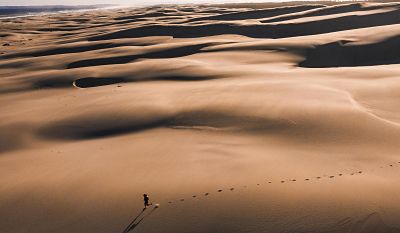
Despairing, Mauro attempted suicide by cutting his wrists with the penknife he was carrying. The attempt was unsuccessful - with such little fluid on board, his blood was so thick that the wounds didn’t run and instead, almost immediately clotted.
After managing to regain some composure and mental clarity, Mauro remembered what the race directors had told competitors and started to walk in the direction of the early morning clouds, following his compass when they later disappeared.
After walking for miles across the desert, Mauro eventually stumbled across a remote civilisation who raised the alarm and finally got him some help.
Against all odds, Mauro survived nine days alone in the desert and covered a whopping 299km in what is a truly epic and harrowing story of survival in the face of extreme dehydration.
The doctors at the Algerian hospital where he was brought reported that “16 bags of intravenous fluids were needed to replace his water loss”. His eyes, liver and kidneys were badly damaged and for months afterwards, his body rejected any kind of solid food, only allowing him to consume liquids.
Survival Story #2: “The desire for revenge against Jesus”
Delving back in history, there are some extraordinary stories of desert survival.
One of the most famous and remarkable examples of extreme survival was described by William John McGee in 1906 and was highlighted in Alex Hutchinson’s excellent book ‘Endure’ more recently.
On the morning of Tuesday 15th August 1905, Pablo Valencia and his friend Jesus set out on horseback to explore the desert. By nightfall, Jesus had returned back to camp, leaving Pablo in the desert 56km away, with the agreement that he would return the next day.
Jesus set out at 3.30am to meet up with Pablo but returned at 7am reporting that he was unable to locate him. Another rider was sent out to find Pablo but he too returned two days later, unsuccessful and in a state of “speechless exhaustion”.
Pablo, who’d been left with just a single two-gallon canteen of water and having already been lost for three days, was assumed dead by this point and so no further rescue attempts were made.
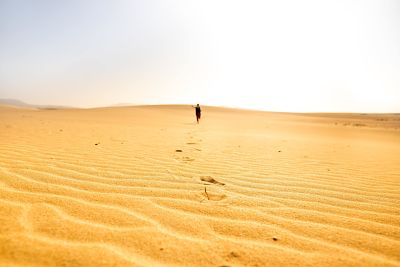
But, five days later, an unidentifiable human - stark naked, skin burnt black, with lips “as if amputated”, gums and tongue shrunken, cracked and blackened - crawled into camp with a roar.
It was Pablo, back where he left eight days previously.
He was unable to speak or swallow and his respiration was slow, spasmodic and accompanied by a deep guttural moaning. His limbs which had been muscular were shrivelled and scrawny, his ribs protruded “like those of a starving horse” and his abdomen concave, drawn back against his vertebrae.
The men found on closer inspection that he was also deaf to all but loud sounds, blind as to distinguish nothing but light and dark, and that there were minimal signs of circulation beyond the knees and elbows (extremities were cold and no pulse could be felt in his wrists).
Remarkably, Pablo had survived alone in the desert for eight days (seven of those without water) during which he’d walked and crawled more than 160km, while surviving by eating insects and drinking his own urine (until the final two days when his kidneys stopped producing urine).
His weight loss when he reached the camp was estimated to be about 18kg (39.7lbs) - about 25% of his bodyweight!
As with Mauro Prosperi, the story of Pablo Valencia is one of immense iron will.
Most people who die in the desert do so within the first 36 hours; another quarter within 48 to 50 hours, and nearly all within 70 to 80 hours. Yet Pablo survived for almost 160.
Five things went in Pablo's favour:
- He’s said to have been fortunate because he didn’t suffer the delirium or wild movements (resembling an epileptic fit) that can afflict those suffering from extreme dehydration and speed their demise.
- The temperature of the Yuma desert at the time was uncharacteristically overcast and ‘mild’ (by desert standards) - the temperature reached 103.2°F (39°C) one day but never exceeded this.
- Though Pablo suffered from extreme dehydration, his core temperature never pushed beyond the 104°F (40°C) necessary for heat stroke. The temperature of the desert often reaches in excess of 110°F (43°C) and if it had when Pablo was out there, then it’s likely that he’d have met his demise within a day or two.
- Pablo was well-acclimated to desert conditions – a fact which will have helped stave off heat stroke.
- And lastly, the betrayal. Whilst physically Pablo was severely broken and close to death, his mindset over the eight days was quite the opposite. He was totally convinced that Jesus had left him to die on purpose and it’s said that “he was obsessed with the desire for revenge against Jesus”. So, whilst Pablo’s body came close to calling it quits, his mind didn’t and his ‘will-to-live’ (or more accurately, his will-for-revenge) didn’t waver.
Dehydration and the psychology of survival
This psychology of survivors is a subject of great interest because there’s a certain morbid fascination when hearing survivor stories from brutal prisoner-of-war and concentration camps, as well as more contemporary accounts of escapes from shipwrecks, crashed aircraft and collapsing buildings.
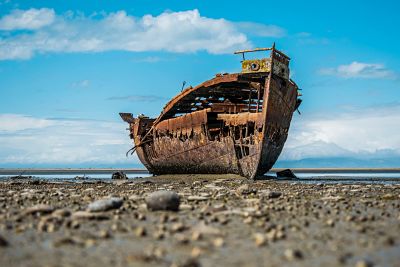
We’re quick to assume that survivors of extreme disasters have an exceptional strength of character which allows them to live whilst others perish and while that may be true, some psychologists have suggested we’re looking at it incorrectly.
In his book ‘Survival Psychology’, psychologist John Leach explores a different perspective - rather than asking ‘why did this person survive?’, we should consider the question: ‘how did so many others die?’.
One view is that people die because they become hopeless. A mental tipping point is reached where living seems hard but dying is easy. A depression settles on a person and they entertain the prospect of ‘giving up’.
In World War II, the Japanese called it bura-bura or ‘do-nothing-sickness’, whilst the Americans called it ‘give-up-itis’ from their prisoner of war experiences in Korean and Vietnamese camps.
With this in mind, Leach suggests it’s not the ‘will-to-live’ but the ‘won’t-to-live’ that matters.
In addition, when life is threatened, cognitive function becomes impaired. Witness testimonies from shipwreck survivors, stranded aeroplane crash victims and escaped prisoners of war suggest that goal-directed behaviour (behaviour orientated towards attaining a specific goal, like survival, finding water etc.) is the first function to fail when under threat, as well as an inability to engage with the new environment (both physically and situationally).
Pablo’s story supports the importance of maintaining goal-directed behaviour in circumstances of extreme survival; he had one very clear goal – to live long enough to have revenge on Jesus.
It’s also said that he made his way back to camp having recognised a familiar landmark and moved only at night when conditions were cooler – two things which suggest his cognitive function was intact and working well. The same can be said for Mauro and remembering to follow the clouds.
So, the survivor’s mindset is hugely important. But even so, under circumstances of extreme dehydration this can only sustain a person for so long before the body gives in.
What happens to the body in extreme cases of dehydration?
Typically, when the body has lost water which isn’t replaced by drinking and it’s experiencing dehydration, it initiates the secretion of hormones which act in conjunction to:
- Conserve water by increasing reabsorption in the kidneys and decreasing urinary output
- Increase water intake by making you feel thirsty
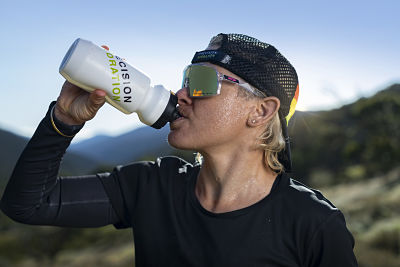
The body is extremely good at telling you what it needs, when it needs it, and thirst is a great example of that. The more extreme the body’s need, the more extreme the signal. Note, both Mauro and Pablo drank their own urine (and the blood of bats in Mauro’s case!).
Most people can tolerate up to 3-4% dehydration without too much difficulty or impairment (it’s thought that a wide proportion of people function day-to-day chronically dehydrated). If water losses continue without replacement and dehydration persists, then dizziness and fainting will occur (~5-8%).
Fluid losses of 15-25% body water can be fatal. The blood volume in humans at this point has decreased by almost a third, increasing the viscosity (the thickness) of the blood.
Thicker blood is harder for the heart to pump and circulation around the body slows. At this stage, the body - in survival mode - starts to get more selective about where it directs its blood volume.
Blood flow to ‘non-vital’ organs like the gut, kidneys and liver is reduced which causes damage. Without the kidneys and liver filtering the blood, metabolic waste products (salts, acids) quickly accumulate, which affects the functioning of other organs and ultimately causes death by multiple organ failure.
Less blood is also sent to the skin (as seen in Pablo’s lack of circulation to his periphery) and less heat is lost from the skin - problematic when environmental conditions are hot/humid.
Under these conditions, the rise in core body temperature can prove fatal by amplifying the risk of heat stroke and accelerating death . As the body’s core temperature accelerates rapidly beyond 41°C (104°F), body cells begin to break down as the body’s proteins are destroyed, the sheaths of the blood vessels begin to leak and cause haemorrhaging throughout the body.
Thinking the blood vessels have been severed, the body responds by initiating a ‘clotting cascade’. In the most severe cases, heat stroke can cause multiple organ failure, circulatory collapse, damage to the central nervous system and ultimately death.
Can athletes die of dehydration?
Under athletic conditions, it's very unlikely an individual would die from dehydration unless cut off from water altogether.
In fact, overhydration carries a greater risk of death for athletes because consuming too much fluid during exercise can cause hyponatremia (low blood sodium levels).
More often than not, striving for a 100% ‘like-for-like’ fluid replacement during exercise is an inappropriate, and sometimes dangerous, strategy.
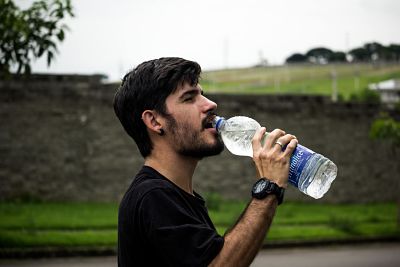
A degree of dehydration following exercise is to be expected. A lot of athletes’ volume of sweat loss will outstrip the volume of fluid they can (or choose to) consume.
For example, Haile Gebrselassie lost 9.8% of his body mass during the 2009 Dubai Marathon with seemingly no negative side-effects - in fact he won the event by nearly two and a half minutes. This weight loss closely matched his losses at the Berlin Marathons of previous years, where he set two world records.
One contemporary theory to explain this is that highly trained individuals may be able to withstand greater amounts of dehydration than amateurs because their bodies are more accustomed to dealing with it - read our blog ‘how dehydration affects athletic performance and how much you can tolerate’ for much more on this.
How long does it take to die from dehydration?
Good luck getting ethical approval (and willing volunteers) for a scientific study to answer that question!
We can get a pretty good idea by looking at examples throughout history though. Everything suggests Mauro and Pablo were extremely close to dying after eight days without proper food or fluid – but they survived. Going against them were the desert conditions which will have increased the speed of dehydration.

When we look at fatal (or near-fatal) instances of dehydration which occurred in milder environmental conditions, it does seem that the human body might take a bit longer to succumb to death.
Reports of terminally ill patients committing suicide by voluntary dehydration suggest around 10 days will do it.
Phillipa Malpas wrote about an elderly student, Lieke, who made the conscious choice to die by dehydration. She had desired for a legally permitted assisted death with her GP but the law wouldn’t allow for it. So, at the age of 80, when she felt that a reasonable quality of life would not return, she took matters into her own hands.
Nine days after ceasing to drink, Lieke is reported to have passed away pain-free, peacefully and surrounded by love.
So, you’d be excused for thinking 8-10 days is about the limit the human body can withstand without fluids (and for the most part it probably is), but there are outliers.
The record for surviving the longest without any food or liquids goes to Andreas Mihavecz – an 18-year old bricklayer in Austria who was mistakenly taken into custody for merely being a passenger in a car accident. He was put in a holding cell in the basement of the police station and simply forgotten about. The three police officers in charge of incarcerating Andreas each thought one of their colleagues had released him.
Andreas was finally found when a different police officer entered the basement for unrelated reasons and was struck by the smell. Opening the cell, he found Andreas alive, 18 days after being locked up.
So, how long it takes for an individual to die from dehydration depends on the circumstances, how a person is losing fluids, their age, health and nutritional status – and not to mention their mindset.
As with so many areas of hydration, how long a person can survive will depend on the individual and the environment. Although, if you're ever lost in the Sahara Desert, it's worth remembering Mauro Prosperi's story and to follow those early morning clouds...
